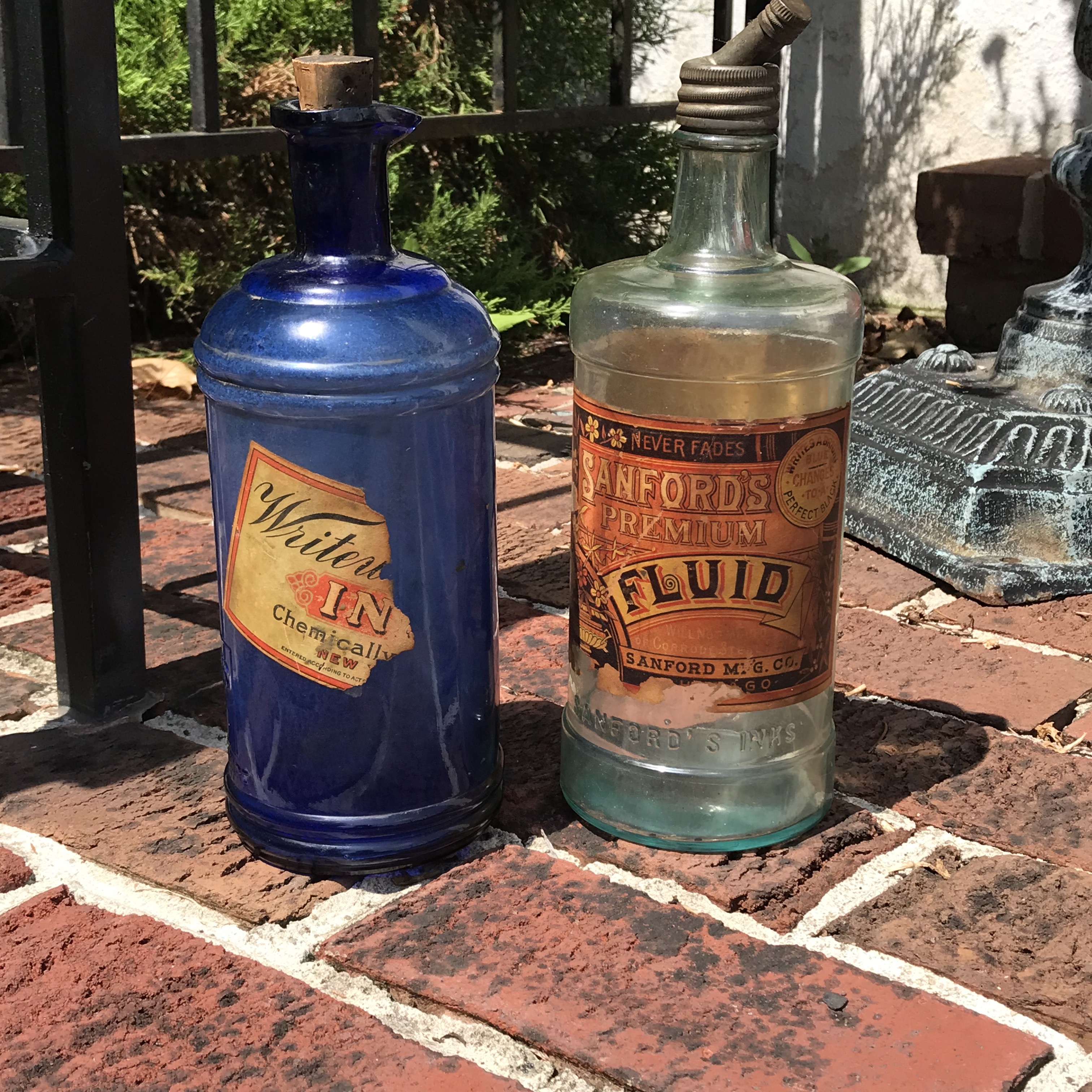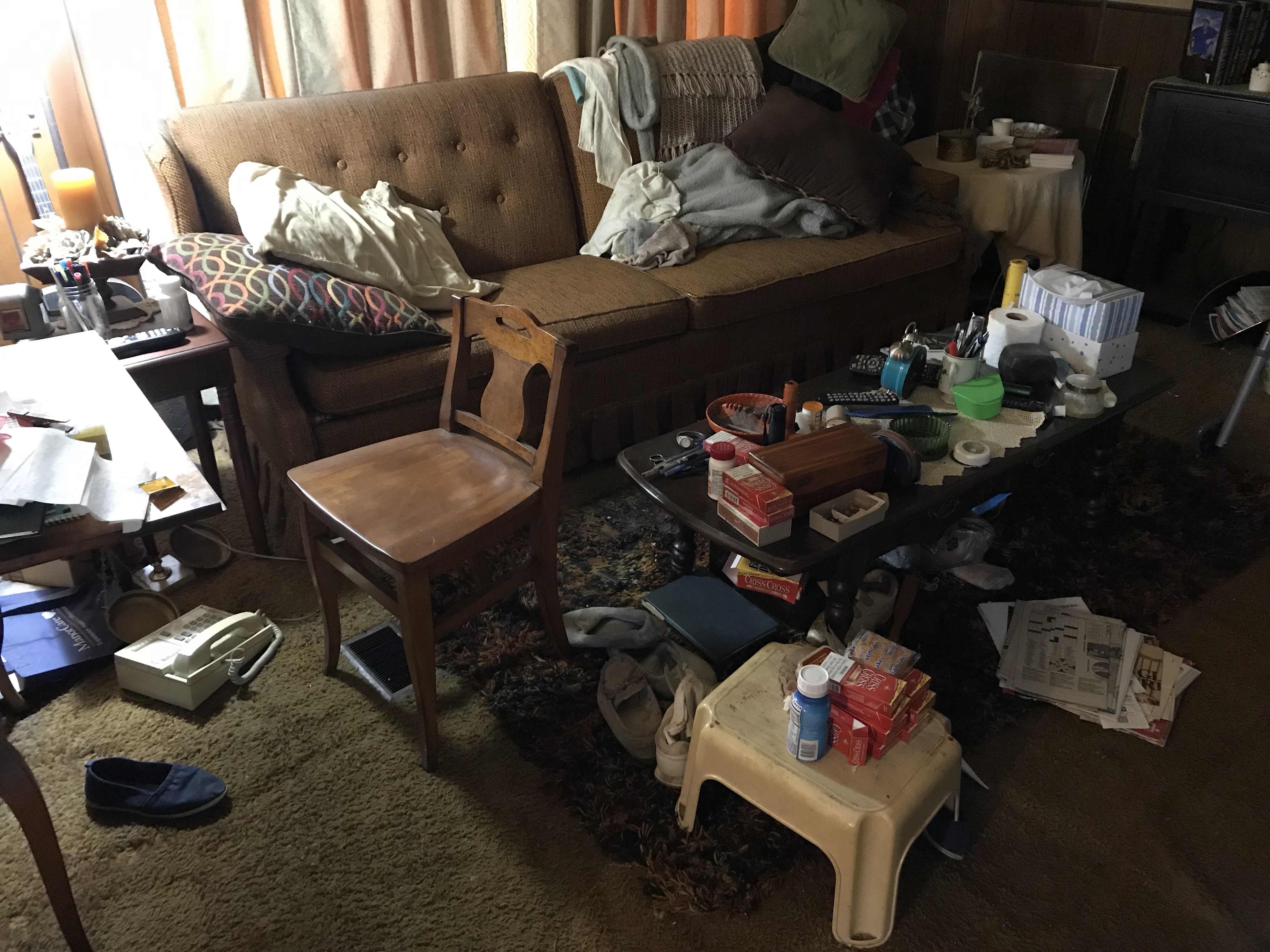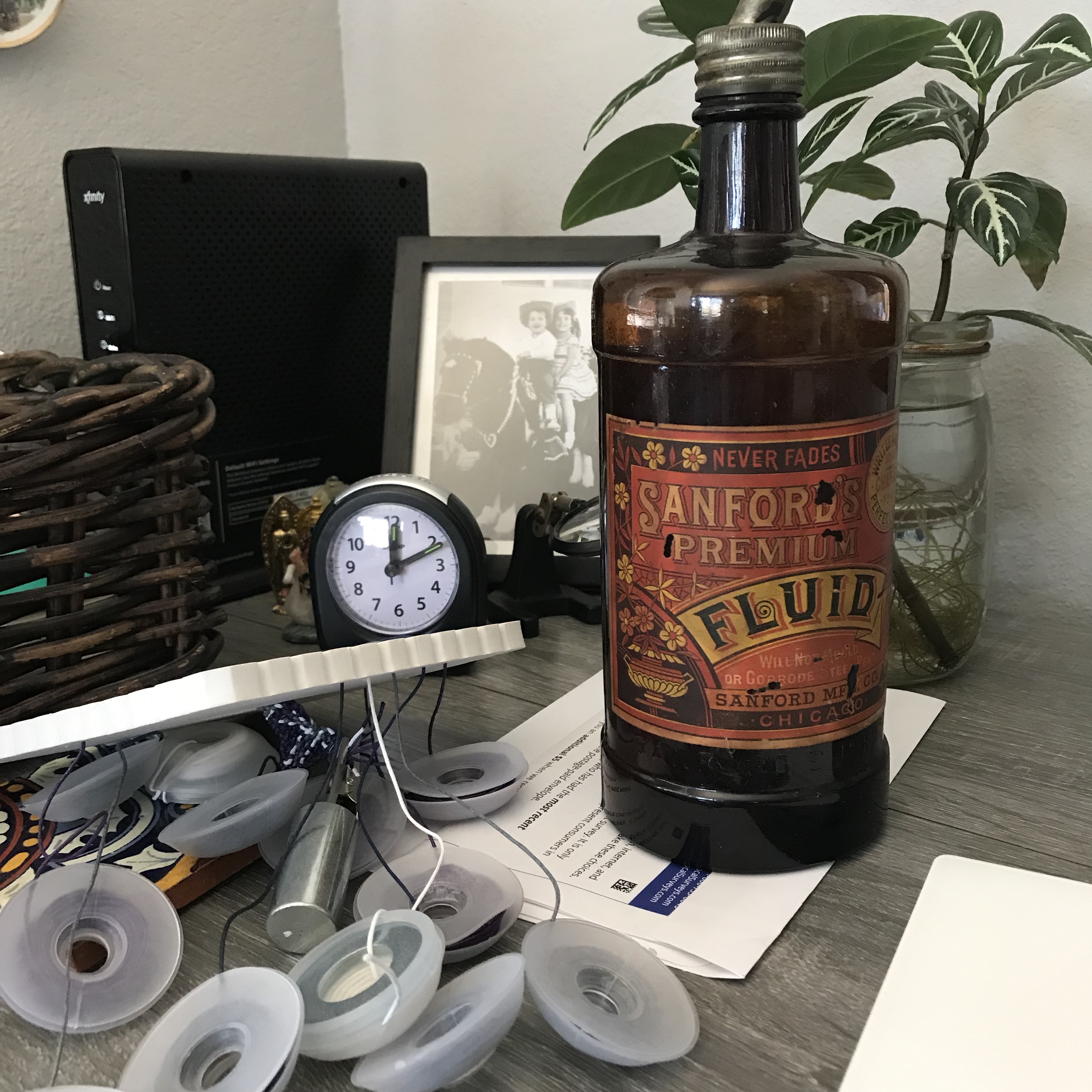We moved into the Lynnport Schoolhouse in the fall of 1966, when I was 8 years old. Built early in the 19th century – I think in 1814 – the two-room structure served students until the 1950’s, when it was converted to a home and a barber shop. By the time we moved in the original brick had long been covered with white stucco, the bell tower had been taken down (the original bell now resides in New Tripoli’s history museum), the fireplaces boarded and replaced by a hissing monster of a coal-fired furnace in the dank basement. That same furnace belched carbon monoxide our first winter there, and only through the quick thinking of Marge Merkle did my mother, my sister and I survive. Sadly, our parakeet didn’t.
When we moved in there were still a few remnants of the school’s former life: a portion of the original blackboard in what became my little ‘play room’, the chalk trough that extended along one wall of my bedroom, a tired schoolroom bench with cast iron details that my mom salvaged with a few coats of paint and, in the attic, three empty quart sized Sanford ink bottles. My mother carefully cleaned the bottles and kept them displayed on the built-in pine hutch that covered almost the entire length of one living room wall.

My mother sold the schoolhouse in 1977 when I was in my first year of college. I was told of her decision long after the deed was done. She had, in fact, already moved into Green Acres Mobile Home Park. I don’t know why but her decision broke my heart. Up until then, no matter how dysfunctional our family dynamics were, it was the home I remembered. But now a price had been paid for my memories and no more would I sit on my wide windowsill watching muskrats swim up the creek that ran below my bedroom window. The room would never be filled with the scent of lilac and spring willow. My refuge from the chaos around me now belonged to someone else.
The trailer my mother moved into was small and dark but she was happy to leave the big school house. It meant she was closer to Shankweiler’s, where she worked as a waitress. I visited her in the trailer once or twice in the 1980’s and then, for many many reasons, we became estranged. When I finally returned to the trailer in 2006 a few things had changed. It was darker than I remembered and sticky with layers of nicotine. But she now had the oak barrister’s bookcase that once belonged to my grandfather and, on one of the shelves, were the three Sanford ink bottles from the attic of the Lynnport Schoolhouse.
Since 2005 my mother’s health has declined. Her friends describe the behavioral changes and memory lapses of what is now diagnosed dementia. Over the past two years she’s fallen several times and remains in severe pain almost certainly due to fractures in her ribs and spine that were ignored by doctors after her first tumble. The remodeled bone – evidence of her injuries – was discovered just last week by physicians in the hospital she was admitted to after having the fall that finally broke her hip.

I was in Pennsylvania when she broke her hip, there to tell her that the nursing home in which she had been admitted would now be her home. My mother needed 24-hour care and I was, in fact, already in the process of parsing out her possessions – deconstructing an 86-year-long story. I knew that as I packed up my mother’s long and troubled life that I was packing up a piece of my own existence and it was unclear to me if the choices I made were correct. What should I keep? What should I pass on? They were, after all, only possessions. Yet they were imprinted with my family’s ghosts. Filled with uncertainty and guilt, I finally moved the items I thought should stay with me to one room and told my mother’s two friends they could have the rest.
In between searching for the papers needed for her Medicaid application and surviving the overpowering stench from forty-three years of cigarette smoke that infused every inch of every item in the trailer with an acrid, choking perfume, I made the twenty-minute drive down Route 143 to Lynnport.
I’d made this journey each time I’ve come to Pennsylvania to visit my mom. Each time I told myself that this would be the time I knocked on the door. And each time I lost my nerve. On this visit, however, when I drove past the house I saw a woman standing not far from where the rose bushes used to grow. I pulled my rented silver Hyundai Sonata toward the side of the road where the long-gone forsythia bushes bloomed bright yellow and walked to the gate held closed by a bungee cord.
“I used to live in this house.”
“What?” The woman couldn’t hear me over the barking of her black boxer. She walked over to me.
“I used to live in this house.”
She opened the gate and introduced me to her partner. She gave me a tour of the garden that changed so much since I’d last seen it. She told me she bought the house because she loved the history of the schoolhouse – a truth that created an instant connection. It was always the story of the schoolhouse that made me love living there. She brought me inside. My playroom, my bedroom and my sister’s bedroom were gone. The interior was a great open space. My mother’s bedroom was an office and the room we used for storage – the old barber shop once lined with mirrors – was now the bedroom it always should have been. Yet even with all the many changes, remnants remained – the energy of the schoolhouse was still there. So was the blackboard from my play room – preserved and hung with love in a wooden frame.

The dark attic where my mother discovered the Sanford Ink bottles was now a light filled loft. Exposed beams revealed decades old graffiti from students and teachers. The house I lived in until I was sixteen had been transformed into something beautiful. It had become a real home. It was then I knew what I had to do.
I brought two of the bottles full circle and returned them to the Lynnport Schoolhouse – the place where they belonged. The third bottle is filled with ghosts from my childhood and will stay with me.
As the year’s go by memories of my decade in the old Lynnport Schoolhouse become blurry. But like the bottle says, Sanford’s Premium ink never fades.


3 thoughts on “Sanford’s Premium Never Fades”
Comments are closed.